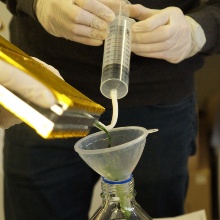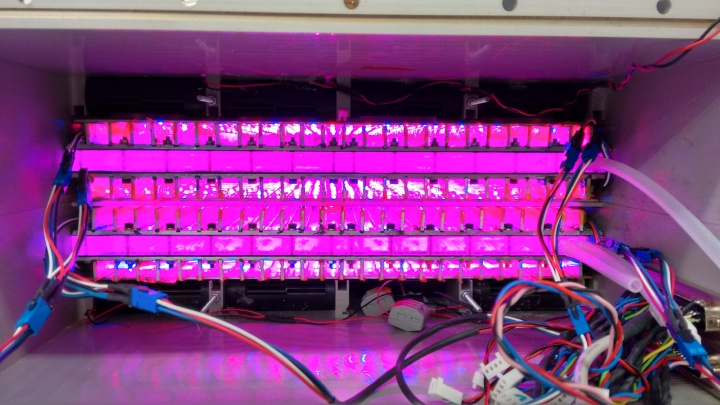On Wednesday, the 13th of December 2017, the University of Stuttgart’s Institute of Space Systems (IRS) will hand over two photobioreactor chambers for the cultivation of microalgae to Airbus Defence and Space. The chambers are the core of a space experiment for the International Space Station (ISS). The technology that will be tested during this demonstration experiment could be used in future crewed long-term missions to secure the astronauts’ oxygen and food supply.
Long-term missions to visit Mars or to develop a station on the surface of the moon require technologies that cannot only supply humans with oxygen and nourishment but that can also recycle carbon dioxide. The minimization of the amount of replenishment required and an increase in efficiency lie at the center of this task. The University of Stuttgart‘s Institute of Space Systems (IRS) is researching such life support systems for crewed spaceflight. Since 2010, researchers have been focusing on biotechnological systems that can be used to gain oxygen from carbon dioxide while simultaneously producing an edible biomass.
The microalgae species Chlorella vulgaris is especially suitable for space applications because it grows rapidly and needs very little space and water. The sphere-shaped microalgae is rich in proteins and could cover up to 30% of the astronauts‘ daily nutritional requirements.
Since 2015, IRS has been working with the German Aerospace Center (DLR) and the company Airbus Defence and Space for a space experiment that will be conducted on the International Space Station. In 2018, for the first time, this experiment will prove the functionality of a hybrid life support system, which is a combination of biotechnology with the physical and chemical components that have been used until now. In order to demonstrate the effectiveness of this combination, Chlorella vulgaris will be cultivated under real space conditions in a photobioreactor system that is suitable for space.
To allow for optimal growth of the microalgae in space, IRS operates an engineering model in its laboratory that is very similar to the real photobioreactor system that will be sent to space. In this structure, researchers have repeatedly succeeded at cultivating Chlorella volgaris continuously over six months – the same way it is planned to occur on the ISS in 2018.
In addition to housing the engineering model of the experiment, the University of Stuttgart’s laboratory is also responsible for conducting development tests on the model. University scientists will provide the two photobioreactor chambers in which the microalgae will be cultivated and the components needed for the flight model, which will be built by the team’s industry partners. Finally, the scientists at the University of Stuttgart are responsible for developing and preparing the microalgae starting cultures and the nutrient and feeding media as well as building the „liquid exchange device“, which is a special device that astronauts can use to supply the microalgae with oxygen and to harvest them.
Expert Contact:
Jochen Keppler, University of Stuttgart, Institute of Space Systems, Tel. +49. (0)711 685 69628, keppler[at]irs.uni-stuttgart.de
Dr.-Ing. Gisela Detrell, University of Stuttgart, Institute of Space Systems, Tel. +49. (0)711 685 69611, detrell[at]irs.uni-stuttgart.de
Point of Contact for the Press:
Julia Dancer, University of Stuttgart, Institute of Space Systems, Tel. +49 (0)711 685-62326, E-Mail dancer[at]irs.uni-stuttgart.de



